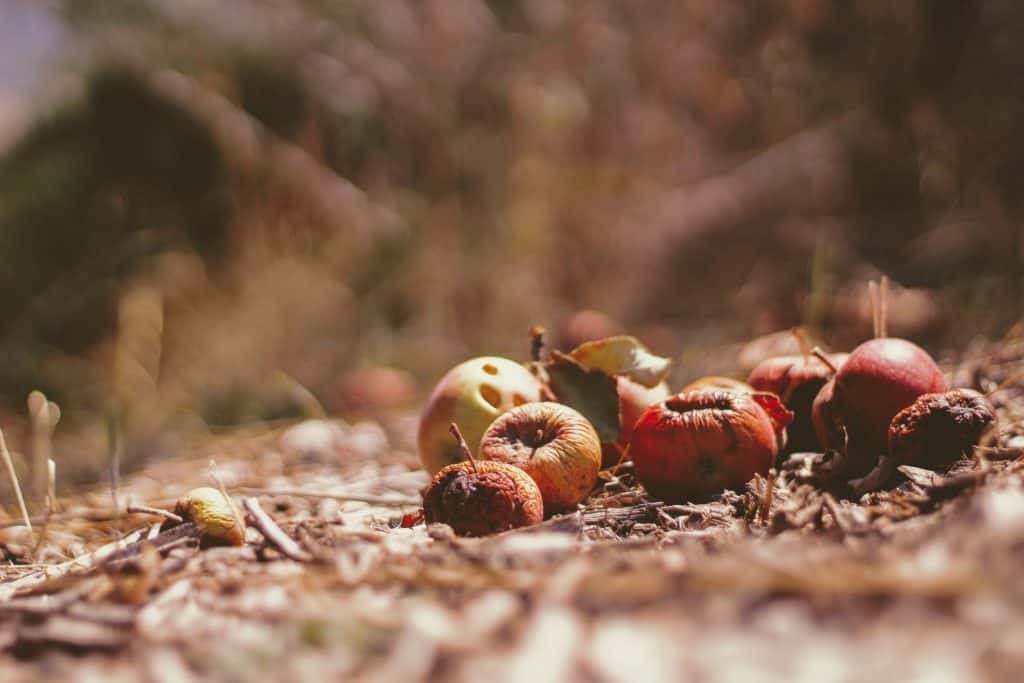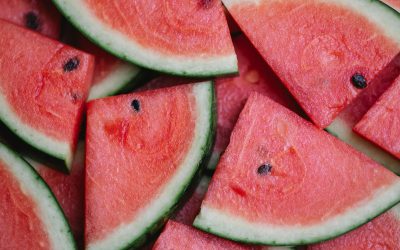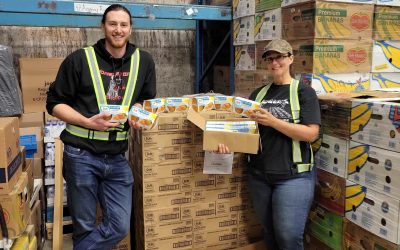For the past two decades, the third week of October marks Canada’s nationwide Waste Reduction Week. Organizations and individuals alike come together to celebrate initiatives that curb waste and educate and inspire others on how to do the same. This year focuses on the circular economy, ways to reduce key wastes including textiles, electronics, plastics, and food waste, as well as how to reuse, share, and repair what
you have.Our future and planet depend on us to reduce (and reuse and recycle (or compost)!) our waste every day of the year. Food waste, in particular, is an enormous emitter of greenhouse gases. A 2019 report from Environment and Climate Change Canada found that Canadians waste 79 kilograms (or 174 pounds) of household food every year. Our nation’s 2.2 million tonnes of avoidable household food waste is equivalent to 9.8 million tonnes of CO2 or 2.1 million cars on the road.
The good news is that 60% of the food that goes to waste is 100% avoidable!
Some foods
like coffee grinds, bones, shells, and peels aren’t edible and so they’re considered “unavoidable” food waste. Tossing foods like wilted lettuce, ugly carrots or imperfect fruit, or good milk a few days past its best before date are “avoidable” food wastes. In Canada, 1 million cups of milk go down the drain every single day, as well as 470,000 heads of lettuce, 1.2 million tomatoes, and 750,000 loaves of bread to name a few top offenders.Caption: Love Food Hate Waste image for what is wasted in retin-a over the counter Canadian households with 2.2 million tonnes of edible food wasted every year—30% of which are vegetables.
In honour of Canada’s Waste Reduction Week, let us all take the pledge to reduce our food waste at home every day of the year. It’s simple and has the power to make a huge impact on our beautiful planet.
Pledge to Reduce Your Household Food Waste
The food waste pledge is easy as pie in principle and just requires a little practice. You pledge to do the following at home:
- Make meal plans and write a grocery list
- Store fruits and vegetables properly to last longer
- Get creative with leftovers and pantry items
- Think critically about best before dates
That’s it. Let’s break down each step so that there’s no confusion during your journey to reducing food waste at home—and lessening your impact on the planet.

4 Simple Ways to Stop Food Waste at Home
1. The Importance of Meal Planning to Reduce Food Waste
Many of us bulk shop for
the week (or longer) and impulse buy based on what we think we need. The result is often that we overshop and cannot physically eat the overabundance of food before it starts to spoil.Meal planning forces you to take stock of what you already have—and therefore don’t need more of (yet).
Digging through the fridge and rummaging through the cupboards are essential first steps to curbing our food waste at home. The next step is to use up what you have first. Write down what you’re missing and then do smaller grocery shops to supplement what you need.
Tip: Use what you have and buy only what you need.
Learn more about how to do a kitchen inventory and meal plan in 7 SIMPLE STEPS to Sustainable Grocery Shopping and Eating Habits.
2. Store Foods Properly to Last Longer at Home
How you store your fruits, vegetables, bread, canned goods, and condiments greatly impacts their shelf-life—and your household food waste.
7 Did-you-knows to start following at home:
- Some fruits like apples, bananas, tomatoes, and avocados give off ethylene which speeds up the ripening and spoilage of other produce. Store them in sealed bags.
- Store anything that will wilt (root vegetables, greens, peppers, cucumbers and so on) in high humidity drawers. Tip: some fridges will have an image of vegetables on this drawer.
- Keep fruits and citruses in low humidity drawers to avoid rot or mould. Tip: some fridges will have an image of fruits on the low-humidity drawer.
- Store potatoes, sweet potatoes, garlic, and onions in cool, dry, dark cupboards, not the fridge. Tip: keep potatoes and onions apart from each other.
- Freeze any fruits, vegetables, or meats to extend their shelf life if you can’t eat them before they spoil.
- Keep bread in the cupboard or extend its life in the freezer. Throw stale bread into a blender, fry it up, and use it as bread crumbs on soups, salads, and pasta.
- Store green onions and cut onions in plastic in the fridge to avoid spoiling other foods.
Check out Love Food Hate Waste’s Keep It Fresh page for more tips on how to properly store various foods in your kitchen—and avoid unnecessary food waste at home.
3. Get Creative With Leftovers and Your Pantry
Part of your pledge to reduce food waste in your home is to save and eat your leftover meals and foods. For example, if you make a hearty soup and only eat half of it, freeze the rest for the next rainy day or have it for lunch along with a side salad. Likewise, leftover food items like half of an onion, wilted vegetables, and leftover chicken make great stock for soups and dishes in the future.
Here are 10 Clever & Easy Kitchen Hacks to Reduce Your Home’s Food Waste. Get creative with leftovers in your fridge and the items in your pantry with the Art of the Pantry: Finding New Inspiration in Your Cupboards.
Tip: Store leftovers in see-through Tupperware so that you know what you have. Out of sight and out of mind often equals food waste.
4. Think Critically About Expiration and Best Before Dates
In Canada, only five types of food have true expiry dates: baby formula, meal replacements and supplement bars, meal supplement drinks, formulated liquid diets, and foods for low-energy diets. The latter two require a prescription. Expiry dates are the date past which they must not be consumed.
All other foods—dairy, meat, eggs, vegetables, fruits, canned goods, dried goods, condiments, you name it—have best before dates. This indicates quality and peak freshness.
Milk is one of the most commonly wasted foods in Canada. It has a best before date that indicates freshness and excellence up until that date, but it’s still safe and good to consume up to two weeks later so long as it was stored correctly and smells fine. Trust your nose and your instincts.
Tip: Think critically about best before dates before you throw good food out, especially pantry items. Look up specific foods and their post-best before dates and use your senses to guide you.
Learn more with BEST BEFORE DATES: Everything You Need to Know.

Divert Your Household Food Waste From the Landfill
Organic material in the landfill decomposes to release methane gas. This is a greenhouse gas that is 25 times more harmful to our planet than CO2. Between this and rising food insecurity, it’s so important to curb our food waste at home as well as to divert food from ending up in landfills at other stages of the food chain, which is what Second Harvest aims to do across the country.
It’s time to do our part. Take the pledge to reduce food waste at home.
Learn more about food waste in Canada and what you can do about it with Second Harvest’s free e-learnings.





